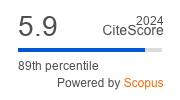Article | Open Access
Age-Based Digital Divide: Uses of the Internet in People Over 54 Years Old
| Views: | 5022 | | | Downloads: | 4107 |
Abstract: The digitization process is widespread and unrelenting. Compared with other European countries, Spain has a good position in the latest data compiled in the Digital Economy and Society Index. Direct use of communication and information technologies is high among the regions in Spain, where the national average in the region of Valencia stands out. However, despite this context, differences between population groups continue to be observed in different dimensions of the digital divide. This article explores this multidimensional gap among the midlife and older adult population. The research design adopts a mixed-method sequential design (questionnaire-based survey, follow-up with semi-structured interviews) to explore social positions in relation to access and use of technologies and the meanings that people ascribe to such positions and actions. A telephone survey was conducted with 1,800 people over 54 years of age residing in Valencia in September 2021, followed by 67 in-depth interviews. The results suggest that demographic and socioeconomic characteristics (level of education, age, and gender) determine people’s position in the digital divide. Qualitative discourses qualify these results by elucidating key aspects that could be acting as protectors of digital and social exclusion. They are related to the social and family context and the characteristics of digital service providers. The findings are useful to guide both public policies to promote digital inclusion and private market actors when designing their digital strategies.
Keywords: digital competence; digital divide; grey divide; internet access; logistic regression; social context
Published:
© Natalia Papí-Gálvez, Daniel La Parra-Casado. This is an open access article distributed under the terms of the Creative Commons Attribution 4.0 license (http://creativecommons.org/licenses/by/4.0), which permits any use, distribution, and reproduction of the work without further permission provided the original author(s) and source are credited.


